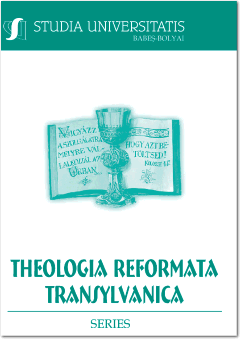HOGY AZ ELIDEGENEDETTEK VISSZATALÁLJANAK ÖNMAGUKHOZ ÉS EGYMÁSHOZ
SO THAT THE ESTRANGED ONES MAY FIND THEIR WAY BACK TO THEMSELVES AND EACH OTHER...
Author(s): Jenő KissSubject(s): History of Church(es), Biblical studies, Systematic Theology, Pastoral Theology
Published by: Studia Universitatis Babes-Bolyai
Keywords: estrangement; alienating structures; loss of self-awareness; ideal-self and self-ideal; impact of media on family; holarchic world model; part-whole (holon); family as middle layer; ...
Summary/Abstract: So that the estranged ones may find their way back to themselves and each other... This study deals with the phenomenon of estrangement, which determines intimate (marital, family) relationships to a significant extent. Aliena-tion is seen as a concealed form of intra-personal and interpersonal restlessness. This phenomenon is not resolved by the reconciliation (which is the subject of the cur-rent volume). Alienation is eliminated when one finds his way back to himself (again) or when people find their way back to each other (again). Following the in-troduction (1), the current article discusses the social manifestations of estrangement based on a study by Peter V. Zima (2). This section addresses estrangement as a so-cial phenomenon, as well as the impact of its structures on marital and family rela-tionships. From the perspective of social sciences, the present and the future of in-timate relationships reveals a worrying picture. Starting from this observation, the study seeks a conceptual basis that, while not explicitly theological, has solid theo-logical foundations, strong enough to offer support for building marital and family relationships, which are seriously affected by social processes. Elements of this can be found in the holarchic world model translated into human sciences by Rudy Vandamme (3), as well as in the contextual approach of Iván Böszörményi-Nagy (4). The basic ideas of this world model and approach help us to establish a founda-tion that allows marital and family relationships not to become victims of social al-ienation structures, but to become places where people can find their ways back to themselves and each other. The conclusion (5) formulates the well-founded hope that intimate relationships have a positive radiation and effect upon society, and as runways to relational ethics enable the coming generation to actively shape the emerging relational and social life.
Journal: Studia Universitatis Babeș - Bolyai Theologia Reformata Transylvanica
- Issue Year: 65/2020
- Issue No: 1
- Page Range: 177-198
- Page Count: 22
- Language: Hungarian

